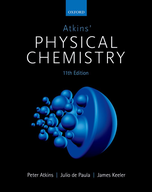?The difference in chemical potential of a particular substance between two regions of a
Chapter 4, Problem E4A.2(a)(choose chapter or problem)
The difference in chemical potential of a particular substance between two regions of a system is \(+7.1 \ \mathrm{kJ} \ \mathrm{mol}^{-1}\). By how much does the Gibbs energy change when 0.10 mmol of that substance is transferred from one region to the other?
Text Transcription:
+7.1 kJ mol^-1
Unfortunately, we don't have that question answered yet. But you can get it answered in just 5 hours by Logging in or Becoming a subscriber.
Becoming a subscriber
Or look for another answer
